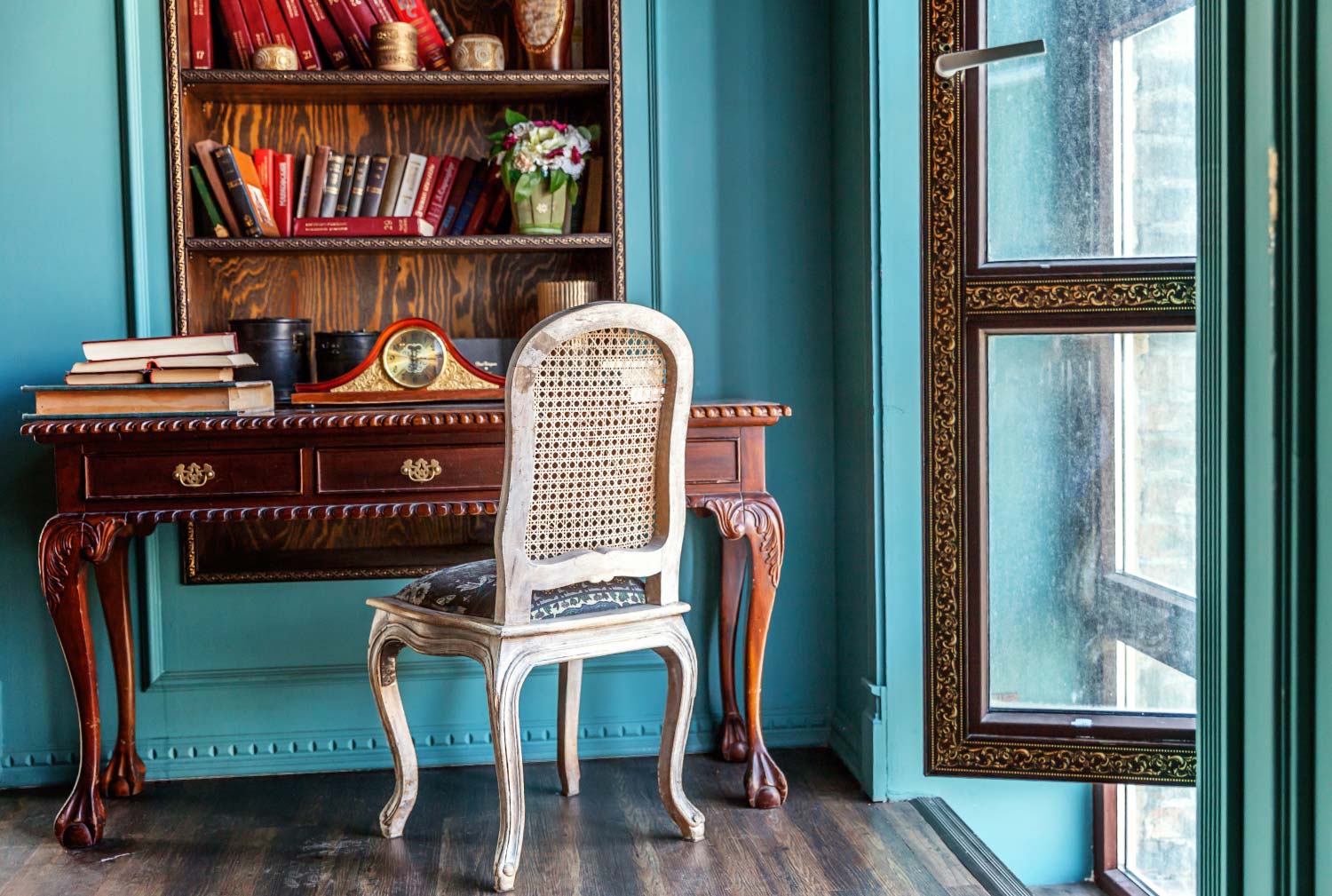
Few things elevate your outdoor space like a landscape architect can. Learn about how much a landscape architect costs and what affects your total.
A Queen Anne-style home may just be perfect for your very own royal family


Queen Anne homes swept through America in the 1800s.
Common Queen Anne home features are irregular roof shapes, towers, and bright colors.
You can replicate a Queen Anne home by simply incorporating colors, vintage furniture, and accessories.
If you’ve ever strolled through town and spotted a home that looks a bit like a castle, there’s a chance it’s a Queen Anne architecture-style house. These homes were made popular during the Victorian era and can still be spotted today. Learn the staples of this architectural style and how to incorporate it into your home below.
Queen Anne houses are just one of the many Victorian-style homes that originated in England in the 1860s by the architect Richard Norman Shaw. Shaw used a mix of Elizabethan and Jacobean architecture to create what is now known as a Queen Anne home.
The Queen Anne style is easy to spot with its abundance of ornate detail, blooming towers, expansive wraparound porches, and asymmetrical facade. Although Shaw gathered inspiration from the Queen Anne era, Queen Anne Victorian homes were built during the latter part of Queen Victoria's reign, from 1870 to 1910. Now, you can see Queen Anne homes throughout the U.S., the most famous being the Carson Mansion in Eureka, California, and the famed Painted Ladies of San Francisco.
While Queen Anne homes are Victorian-style homes, not all Victorian homes are Queen Anne-style. Victorian architecture encompasses several different styles, including Italianate-style homes, Gothic Revival homes, stick-style homes, and more. While many of these styles have common design elements, Queen Anne homes are known for their steeply pitched roofs, towers, and turrets.

Have you ever wondered what your fairy-tale home would be? A Queen Anne-style house is a magnificent expression of color, surface textures, and gingerbread-like features. If this is precisely what you envisioned, then a Queen Anne home is right out of your dreams.
No two Queen Anne homes are the same, but there are some standard features in each:
Asymmetrical facade: These houses are often asymmetrical; a typical home will be two or more stories high. An uneven front is one of the most distinguishable characteristics of a Queen Anne home.
Irregular roof shapes: The roofs are usually steeply pitched and have a combination of hipped and gabled roofing and forward-facing gables. After the 1900s, however, the roofs had a much shallower slope. This addition gave the home a castle-like feel.
Patterned shingles: A single band of shingles known as a belt course was popular, but it wasn’t uncommon to see layers upon layers of different-shaped shingles stacked on top of each other, much like a crowned necklace.
Towers and turrets: Round, octagonal, and polygon tower shapes are included to draw the eye upward. Often, architects used cones and bell shapes as well.
Wraparound porches and balconies: Depending on the type of porch, they mostly go from the front and around one side of the house. They can be decorated with friezes or spindle work. A second-story balcony is unique to this type of home and was made more popular in America for entertaining purposes.
Eclectic windows: Victorian windows in Queen Anne homes come in different shapes, patterns, sizes, colors, and styles. A Palladian, three-part window is also standard in a Queen Anne home.
Combined textures: Wall textures included wooden shingles in various designs, fish scales, and tiles made out of terracotta.
Bright colors: Reds, blues, and yellows adorned these houses’ exteriors, mixed with dramatic contrasts.
While large homes were the most lavish, smaller versions were called Queen Anne cottages. Characteristics of these cottage-style homes were very similar but smaller, one-story framed versions built for rural areas. These include small balconies, bright colors, and are asymmetrical.
Queen Anne-style homes are gorgeous architectural showcases with great curb appeal. If you’re considering purchasing one of these historical homes or figuring out if you want to invest the cost of an architect to have a local architect design a Queen Anne-style home for you, consider the pros and cons of this distinctive style.
These charming homes are filled with history and unique character, so they’re a bold departure from the monotony of modern home design. Many Queen Anne homes are registered historical sites and can be found in historic districts, which may mean tax incentives for purchasing and restoring one of these homes.
As with many other kinds of historic homes, one of the drawbacks of Queen Anne homes is the cost of maintaining and restoring them. Older homes that haven’t been updated may need extensive repairs or replacements, including heating and cooling systems, siding, roofing, and more, all of which come with a hefty price tag. Additionally, purchasing a historical home may limit your choices for exterior elements and be more expensive to insure.

You can style a modern home in Queen Anne design for your own royal family without having to splurge on the cost of remodeling your home. Incorporating key colors, materials, and staple furniture pieces can give your home a romantic Queen Anne feel.
Many consider parlors (or living rooms) the most critical part of a Queen Anne home because these were the first rooms guests would see when walking in the door. Dining rooms were a close second. Owners used both rooms to entertain guests, so creating an inviting yet eye-capturing feel was important. Nowadays, it’s common to see these rooms filled with modern and restored antique furniture pieces in Queen Anne homes.
Here are some decor ideas you can use to style your Queen Anne home:
Paint colors: Consider painting walls with pale colors like cream, sage, powder blue, gray, rose, and mix with accented patterned wallpaper in florals and leaves.
Draping: Include dramatic drapings like fringe, rope tassels, silk shades, or wood blinds.
Flooring: Add wooden or parquet floors covered with large decorative rugs in every room or uniquely place marble accents throughout the house.
Lighting: Hang large crystal or brass chandeliers in the home’s main areas and refurbish old lamps for a luxurious feel.
Decor: Embellish your rooms with artwork, pottery, tea sets, embroidery, stained glass windows, and round mirrors.
Furniture: Choose carved wooden furniture in shades of oak and cherry, walnut, or rosewood styled with plush velvet fabrics in greens, grays, and gold.
Artwork: Use carved decorative frames in wooden or gold finishes for all your photos and paintings.
While combining so many carefully detailed pieces in one room may seem daunting, that’s the beauty of a Queen Anne interior. You can mix and match as many colors, textures and one-of-a-kind trinkets that will make your home beautifully timeless.
From average costs to expert advice, get all the answers you need to get your job done.

Few things elevate your outdoor space like a landscape architect can. Learn about how much a landscape architect costs and what affects your total.

Need to know how much blueprints cost for your new construction project? Use this comprehensive cost guide to get an accurate estimate for your build.

Get transparent draftsperson cost to hire info, including average prices, cost factors, and tips to help homeowners budget and save on drafting services.

You'll encounter many types of architects in your search for the best pro. Keep these specialists in mind before your next renovation or home build.

Blueprints are a critical part of the construction process. Learn what blueprints are, how they’re used, and why they’re so important.

Brutalist architecture was popular in the U.S. from the 1950s to the 1980s. Learn what brutalist architecture is and some of its key elements.